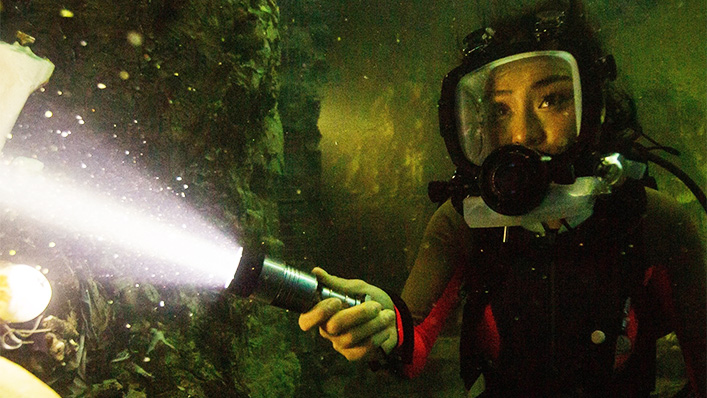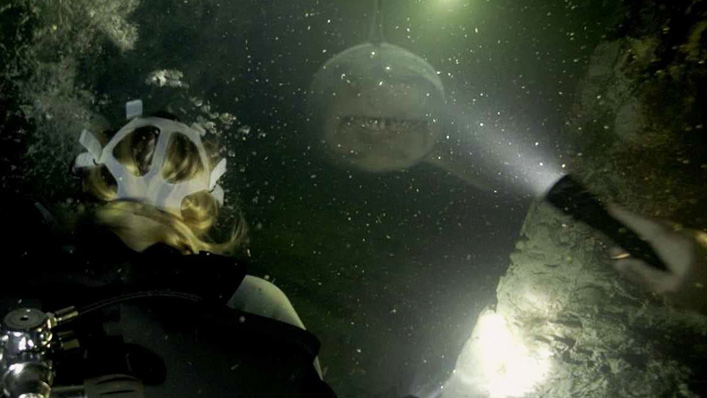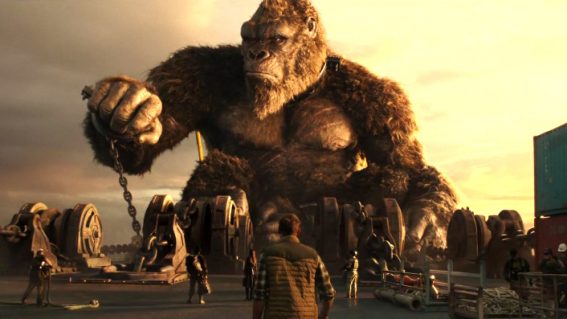A deep dive into underwater cinema from our scuba diving film critic

What would a scuba diving film critic think of movies that depict their favourite recreation? Let us refer to Flicks’ resident diver Travis Johnson, who has something to say about films like 47 Metres Down: Uncaged.
Everyone’s got their own field of expertise that movies get wrong all the damn time. History buffs laugh at Braveheart. I know ex-military guys who can’t stand Oscar-winner The Hurt Locker, to name just one example, because what it depicts strays so far from established military doctrine. Medical personnel howl at surgery scenes, martial artists mock action movies, car nuts snort at chase scenes. It’s A Thing.
It shouldn’t ruin your enjoyment of a movie, hopefully; for one thing, filmmakers can’t be across every detail of a film no matter how hard they try. For another, sometimes films depart from fact for purposes of drama – a cheat here makes for a better story there, and so on. And most importantly, be humble. For every “mistake” you pick up on, there’s probably several more your ignorant arse is blissfully unaware of, but we tend to think what we know is important, and what we don’t know is not.
We all do it to some degree, right? My thing is scuba diving. When I’m not in a cinema or parked in front of the computer, I’m happiest under 10 meters of water, looking at fish. It’s a lot of fun, and the closest you’ll get to exploring an alien world – I highly recommend you give it a crack.
But it is, however, a very technical hobby. You need to get your head around a lot of fiddly details and principles, learn to operate some relatively complex gear, and get a handle on a bunch of different skills, all designed to keep your monkey arse alive in an environment we are clearly not designed for.
So, naturally, movies get it wrong all the damn time. For most people, onscreen scuba action looks convincing enough as long a there’s an air tank and some bubbles. For anyone who knows their way around a PADI manual, however, most diving sequences are full of howlers. So, in honour of the newly released 47 Metres Down: Uncaged, here’s a primer on what movies screw up when it comes to diving.
The Deeper You Go, the Quicker You Run Out of Air
The big thing divers worry about isn’t air to breathe, it’s pressure. Water is, to dumb it down a bit, heavy, and you’re basically piling an extra atmosphere’s worth of pressure on your fragile human form every 10 metres deep you go.
This affects all sorts of things, but crucially it affects how long the air in your tank lasts. See, there’s no fixed amount of time a standard 12 litre tank of air lasts – it varies by depth, the weight and health of the diver, physical exertion, and more. The ballpark answer is approximately an hour at about 10 metres. But the deeper you go the quicker you use up your air, because it’s under pressure, too. You’re actually inhaling and exhaling more air than you would at sea level.
So, when our plucky heroines Lisa (Mandy Moore) and Kate (Claire Holt) are plunged 47 Meters Down and stuck inside a shark cage, their biggest problem is that, at that depth, they’re gonna run out of air in about 10 minutes flat at best. Even faster once panic, exertion and inexperience get them taking big gulping breaths. The big, hungry fish outside are the least of their problems. Speaking of which, just between us…

Sharks Are Pretty Chill, TBH
People are very, very bad at judging risk. Part of that is because our primate brains are wired to perceive the threat represented by, say, two tonnes of toothy, carnivorous fish as more pressing than the more likely demise represented by obesity or drunk driving. Or, hell, even plain old regular diving. Even if you spend every day in the water, you’re more likely to get struck by lightning than eaten by Jaws.
Encountered in the wild, sharks – even the big ones, your Tigers and Great Whites – are normally pretty docile. And while they might do a bit of a fly-by to scope out a diver or a surfer, it’s remarkably rare for them to attack; humans are simply not on their normal menu. However, they have been known to take an exploratory nibble to see if a human is worth eating – and even when they decide you’re not, it’s generally too late for apologies at that juncture.
But that’s not really compelling cinema, is it? Every shark movie, from Jaws to Deep Blue Sea, The Shallows to Open Water, is based on sharks behaving the way no shark in the wild ever does. They don’t eat humans out of preference, and they certainly don’t stalk one particular human all the way from, say, New England to the Bahamas (lookin’ at you, Jaws: The Revenge).
Of course, all that goes out the window when you need a gregarious Great White to set his sights on poor, stranded surfer Blake Lively as in The Shallows – even though there’s a perfectly good (and much tastier from the fish’s point of view) dead whale floating and bloating just meters away. While in the movie the shark goes out of his way to eat poor Mrs. Deadpool, in the real world she could have made a swim for it while it chowed down on blubber boy.
The Bends is Not Just an Overrated Mope Rock Album
Sometimes the biggest danger in diving isn’t going down, it’s coming back up. You can avoid the (not very) dangerous marine life, conserve your air, do everything right, and wind up in a hyperbaric chamber because you came up from depth too fast. The general term for this is the bends – the more technical term is decompression sickness.
Basically, when you spend time underwater, nitrogen dissolves into the tissues of the body. Ascending too quickly can result in bubbles of nitrogen forming in places you don’t want them – like your blood vessels. The longer and deeper down you go, the more time and effort is spent mitigating the risk with slow ascents and pausing at shallower depths to give time for the nitrogen to disperse safely. When you take up diving you spend a lot of time learning about this – it’s the thing most likely to mess you up badly if you don’t know what you’re doing.
But not in Hollywood, my friends! With odd exceptions such as The Abyss (one of the best diving movies, filmed mostly underwater), characters in movies bob up and down the water column like they’re abseiling, bolting upwards to escape sharks, pursue villains, or raise a triumphant fistful of salvaged treasure into the air – as in 1977’s The Deep.
In the real world, this is likely to leave you writhing on the deck in pain; in some cases it can be fatal. You’re actually not supposed to fly for 12 hours after diving, which means the skyhook rescue after the climactic scuba battle in Thunderball would have sent poor 007 straight to the ER. And spare a prayer for Michael Brody (Lance Guest) in Jaws: The Revenge, who uses an air tank with an open valve to rocket to the surface. Poor guy would have been bent like a banana.
It’s Pretty Dark Down There
No matter what their supposed depth dive scenes are, almost without exception, remarkably well lit. Characters could be cruising along a shallow reef or rummaging in the guts of a sunken ship and the colours still pop, which is a bit weird when you consider that colours actually leach out of the visible spectrum the deeper you go. It’s pretty weird – red disappears first, then orange, then yellow, all the way through to violet. At 80 meters, there’s no visible light at all – we have to bring our own.
What this means is its pretty easy to tell if a scene hasn’t been shot at depth by keeping an eye on the visible colours; if reds and yellows are cropping up, you can be sure our doughty heroes aren’t plunging the true depths. It’s a rare film that bothers to address this issue – The Abyss makes a good fist of it, as does Kevin McDonald’s criminally under-seen treasure-hunting adventure, Black Sea.
When the desperate salvage experts of the film (including Captain Marvel’s Jude Law and Ben Mendelsohn) are prying open a sunken Nazi submarine to loot the gold within, the seabed is rendered in a ghostly monochrome unless lit by the divers’ torches – just as it should be. While this detail probably sailed over the heads of 99.9% of the audience, the diving community uttered a low whistle of appreciation.













